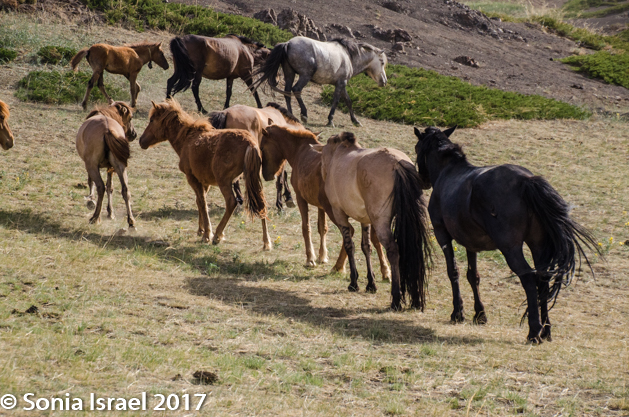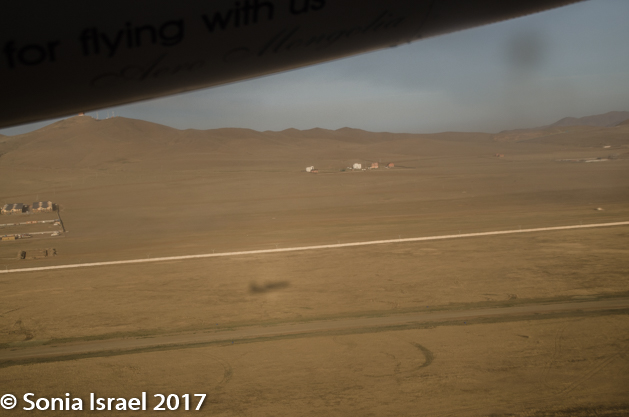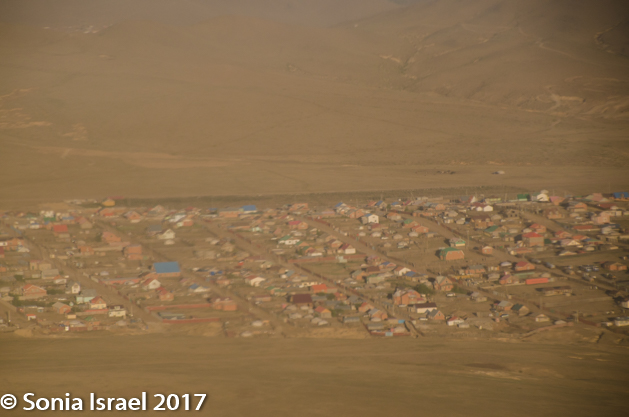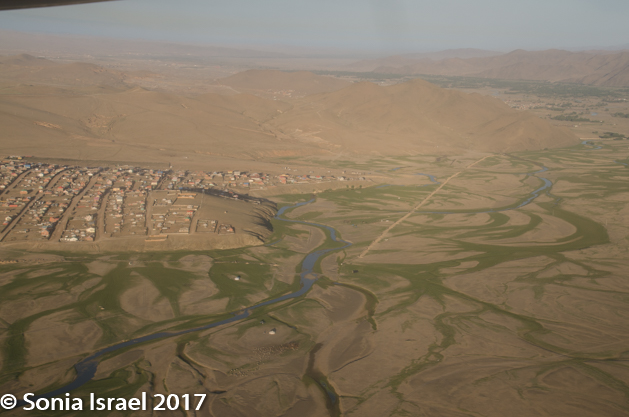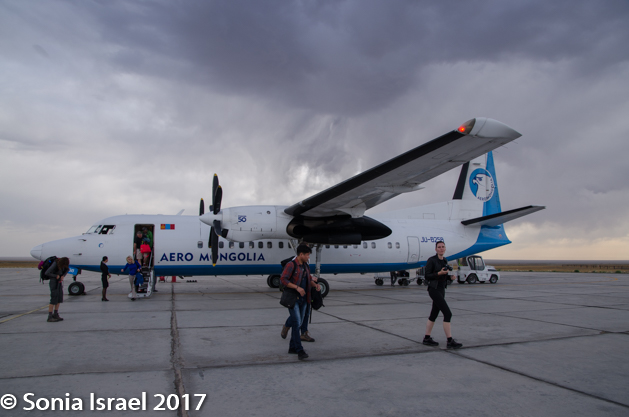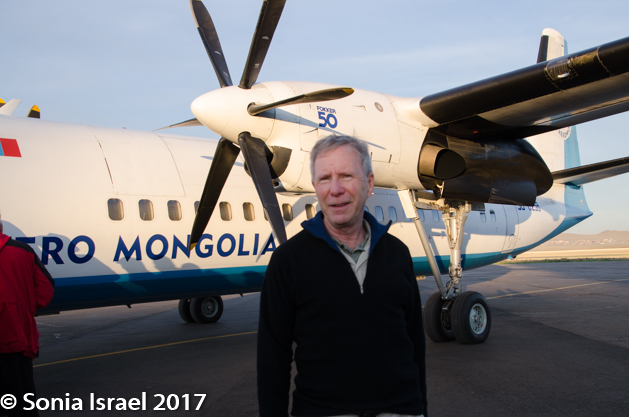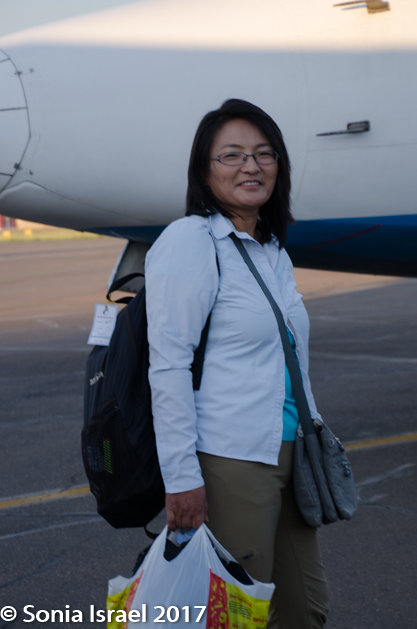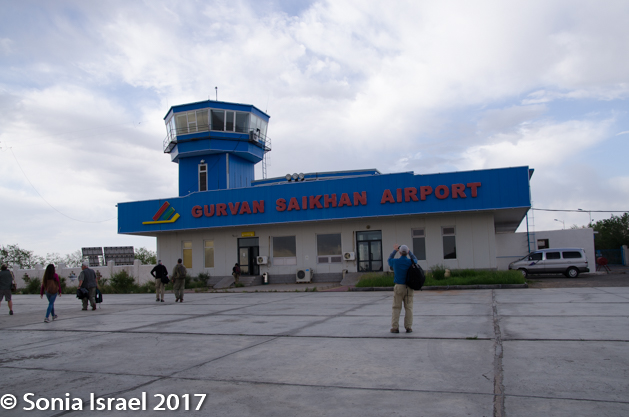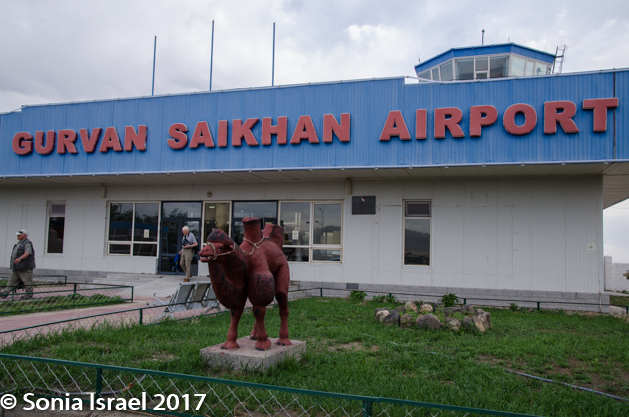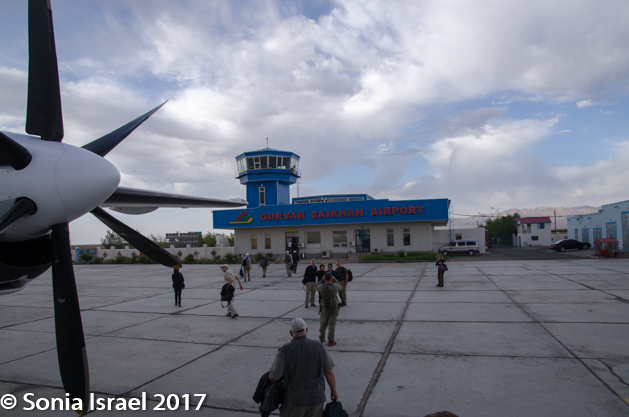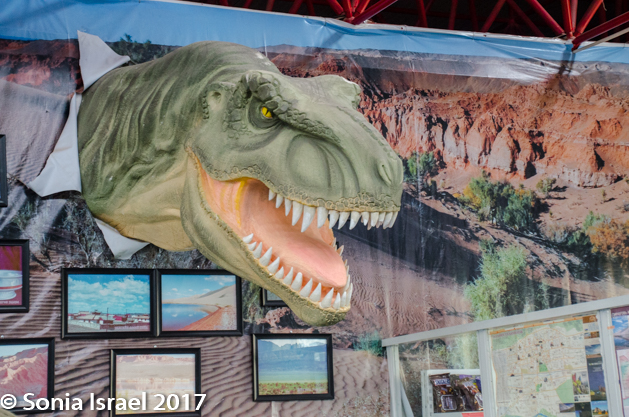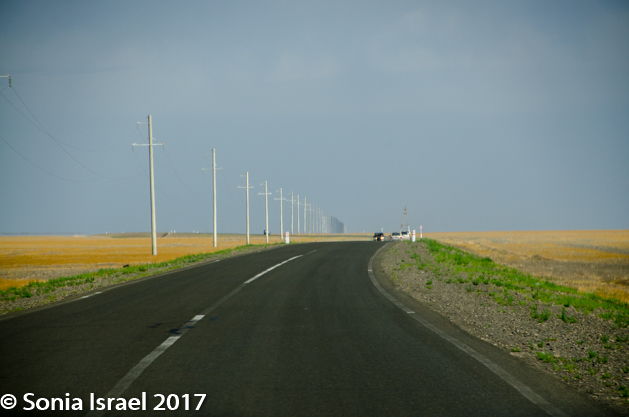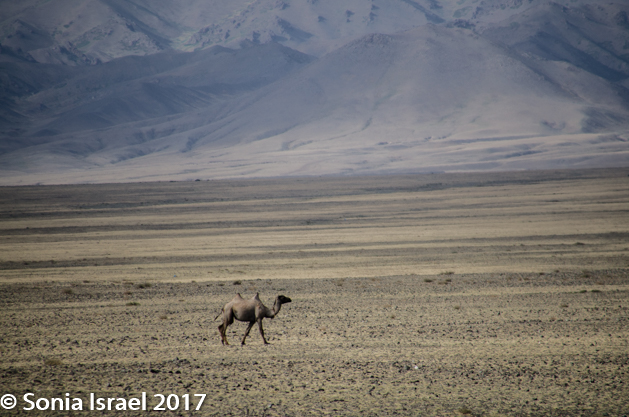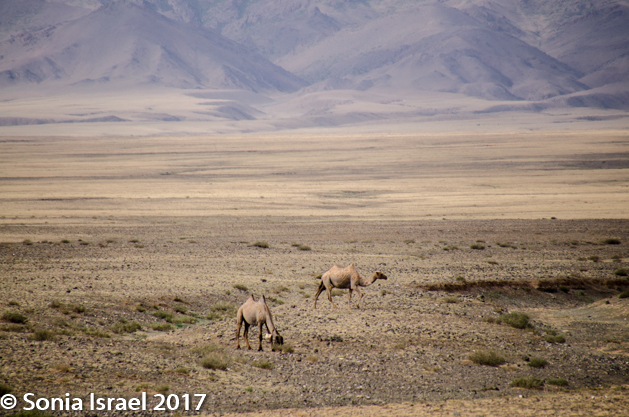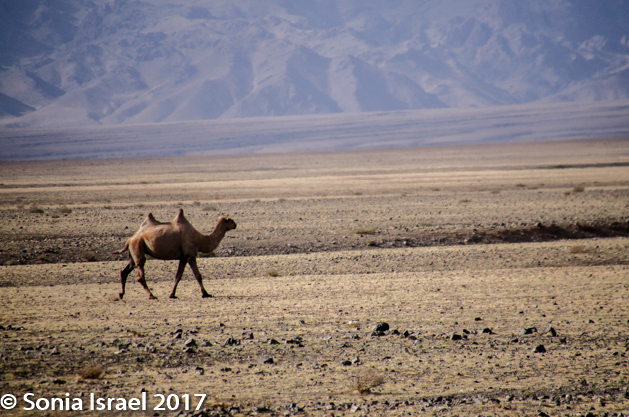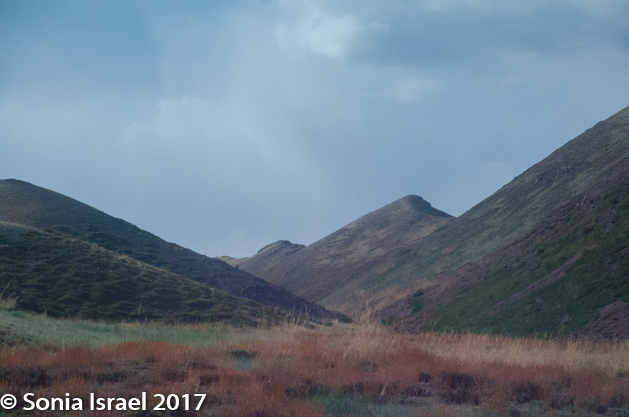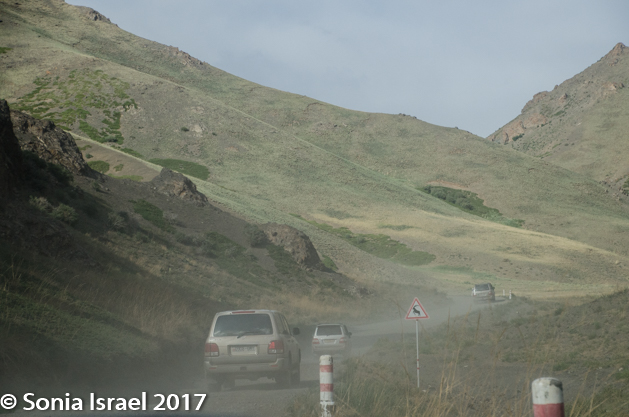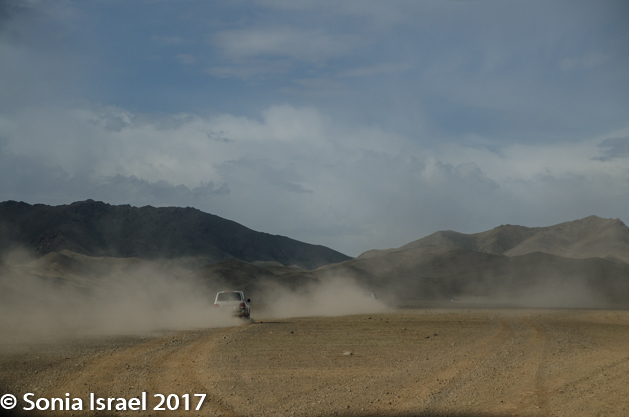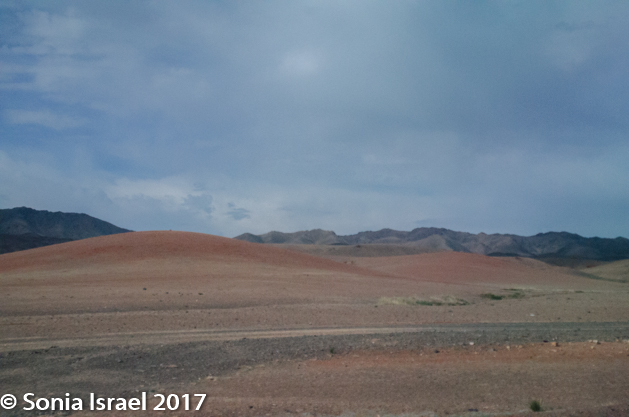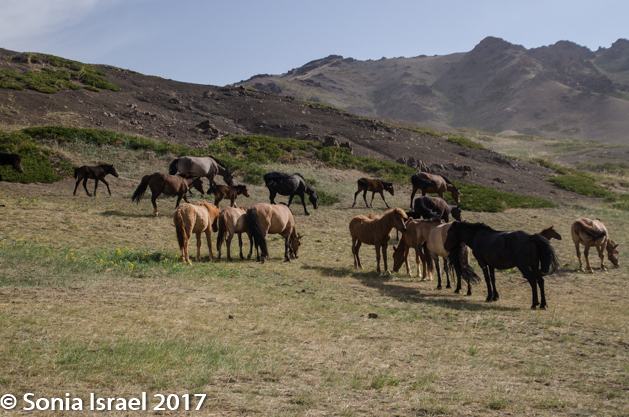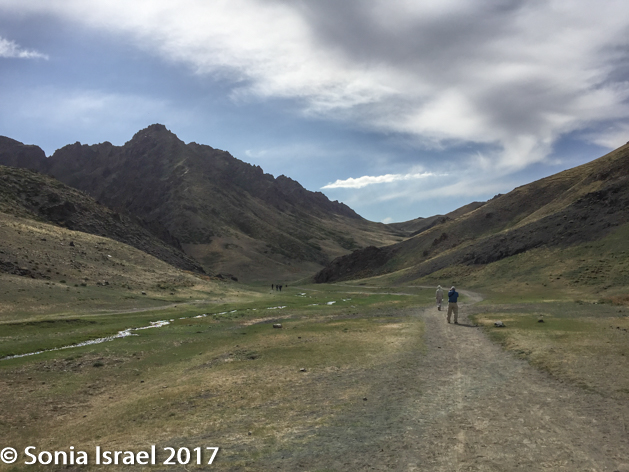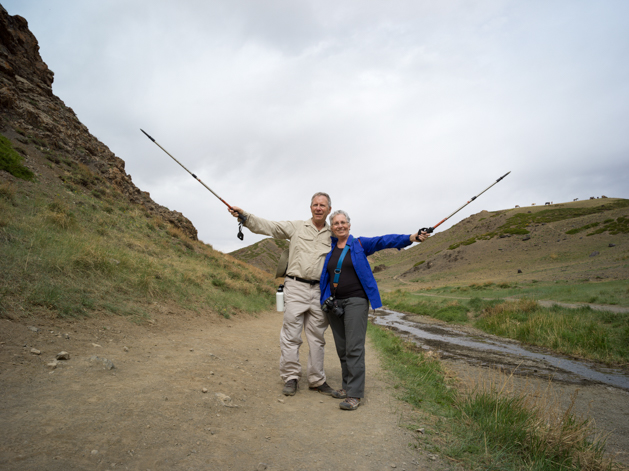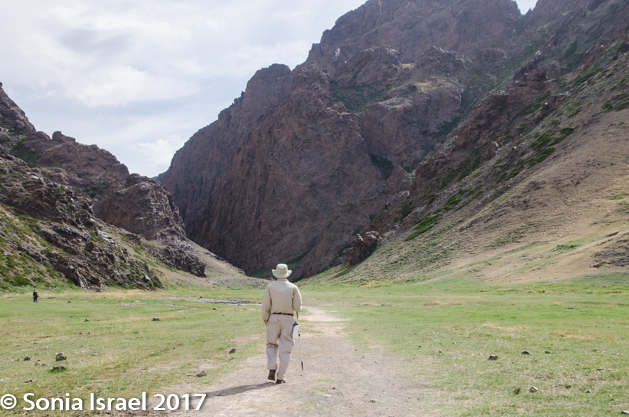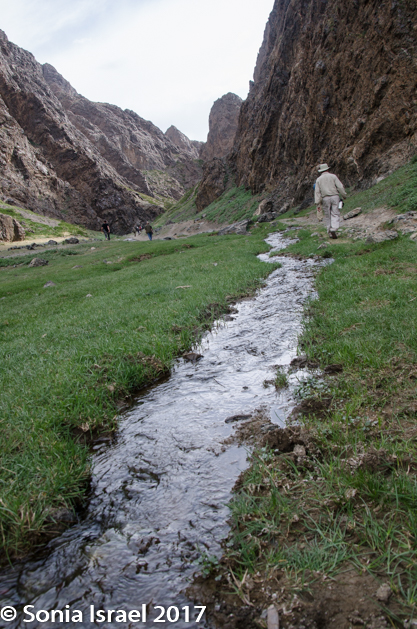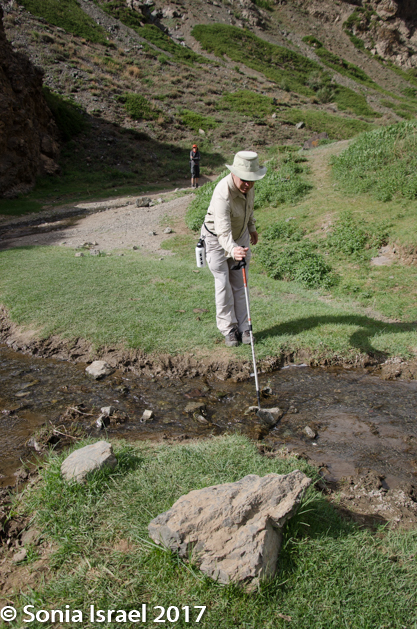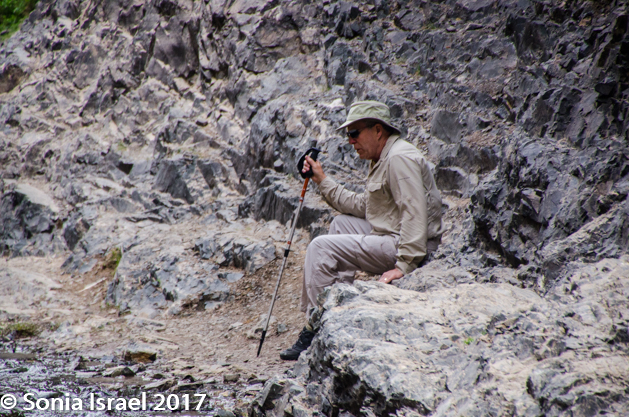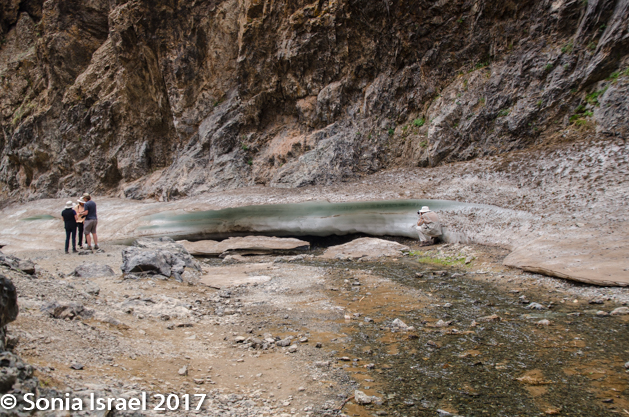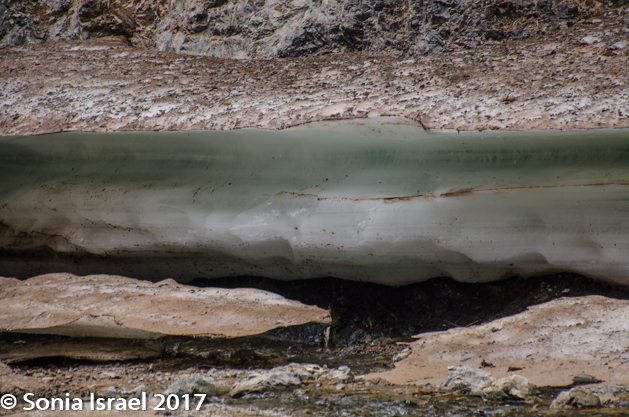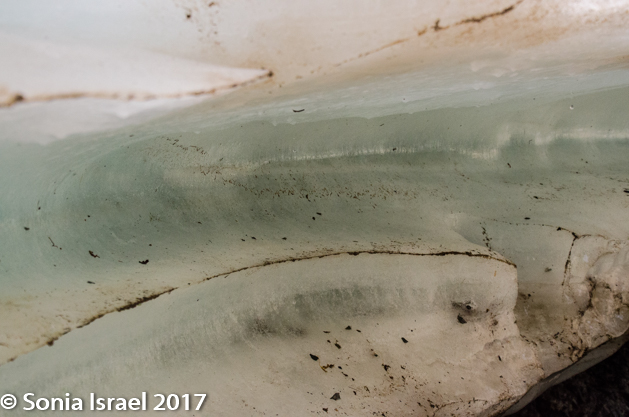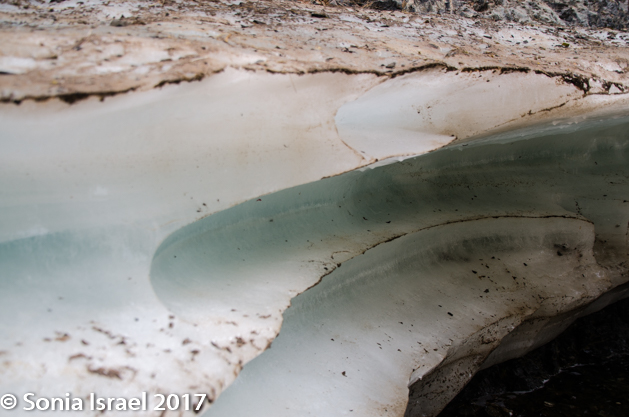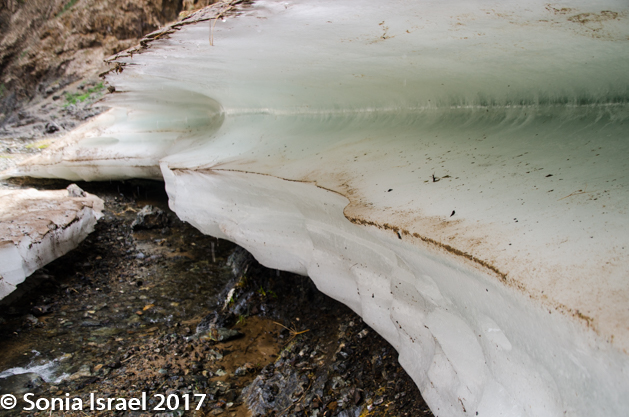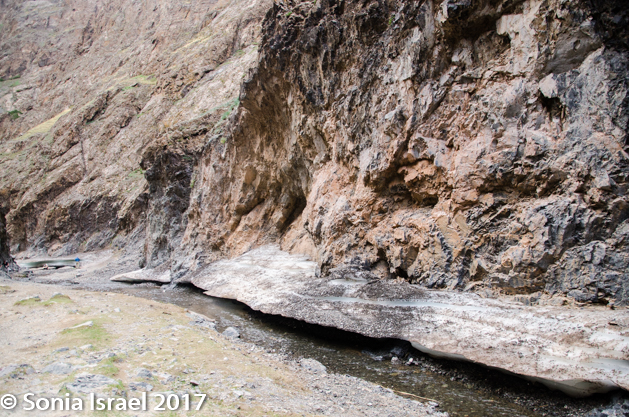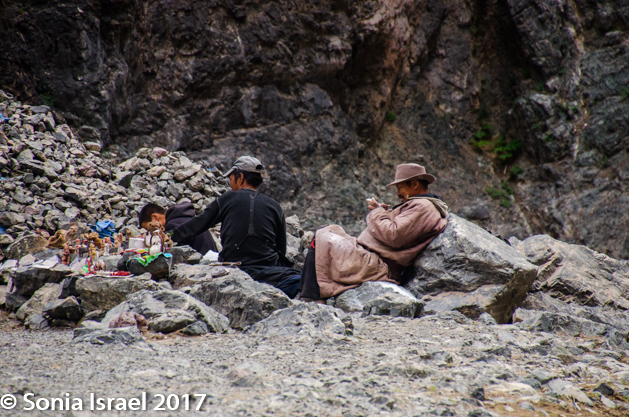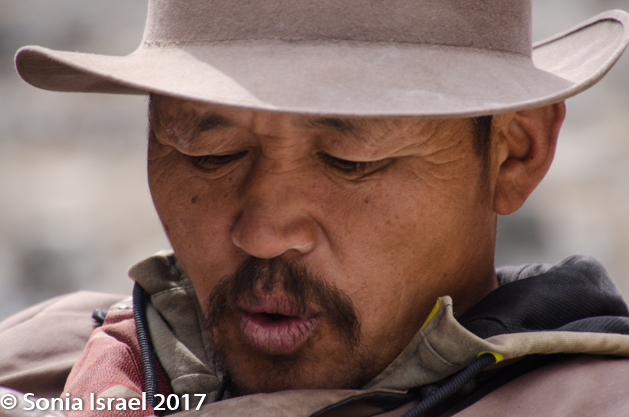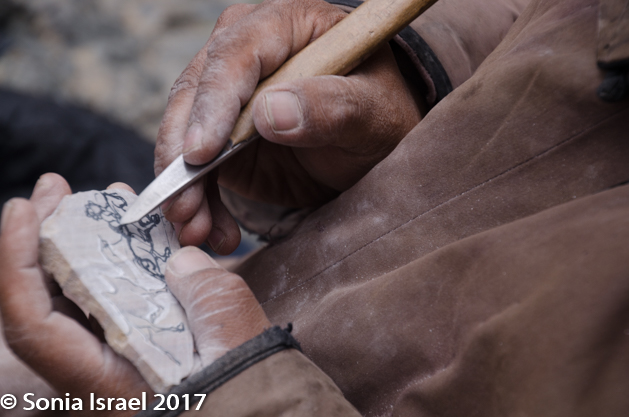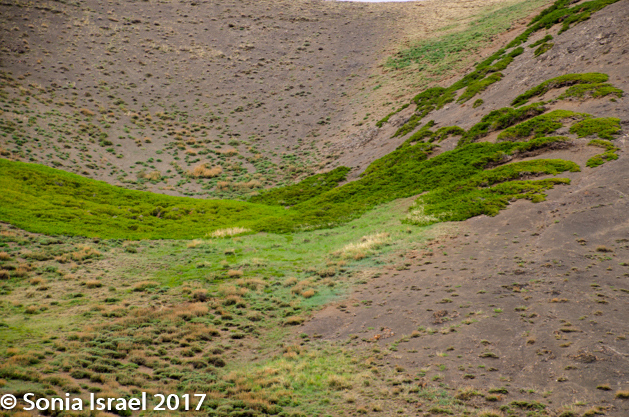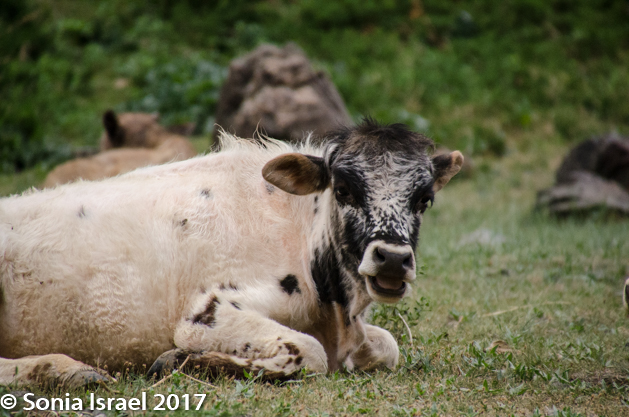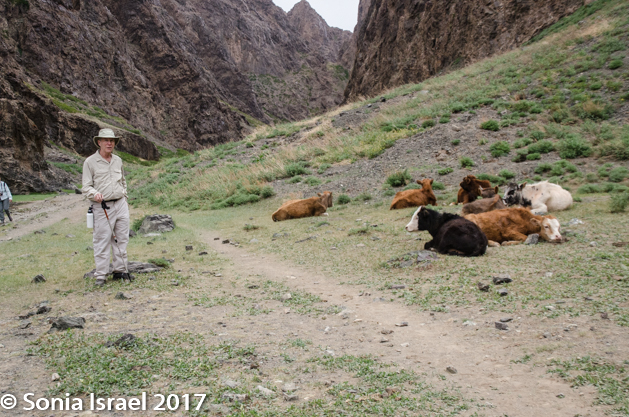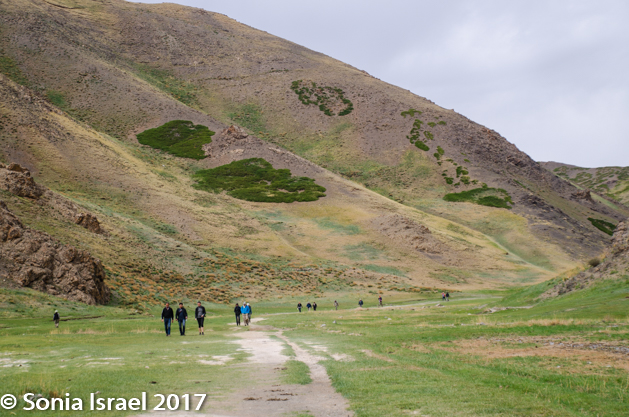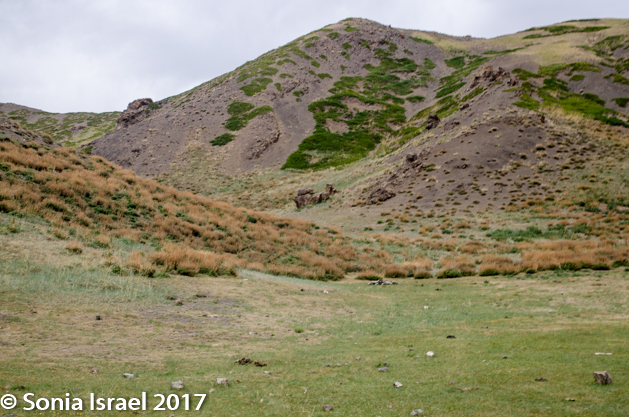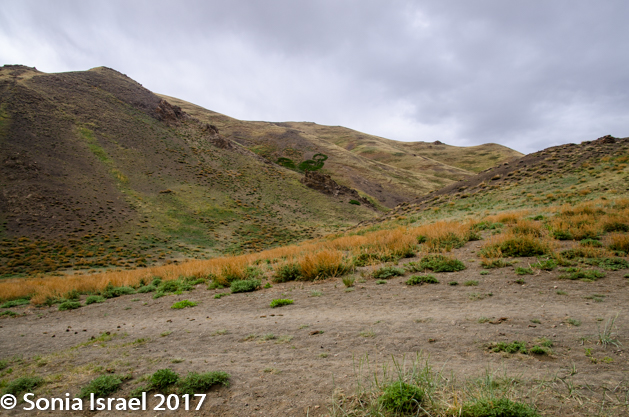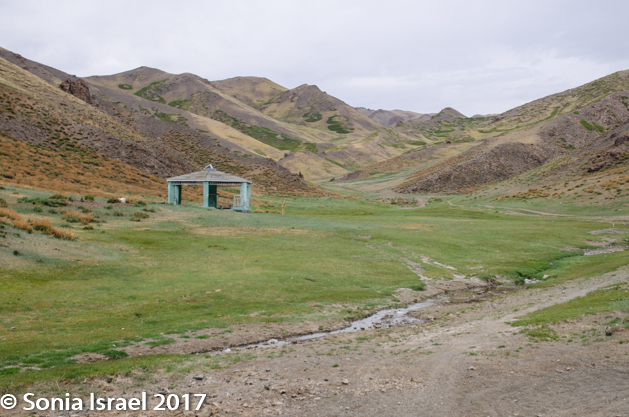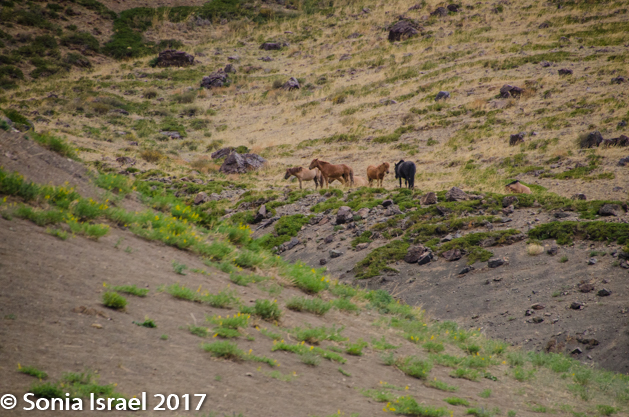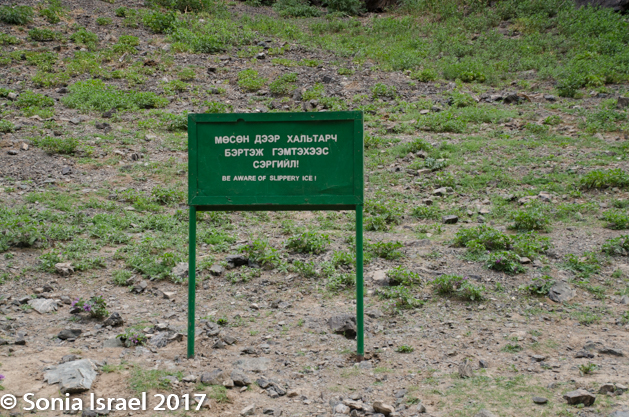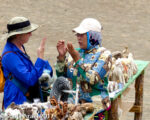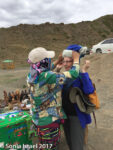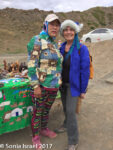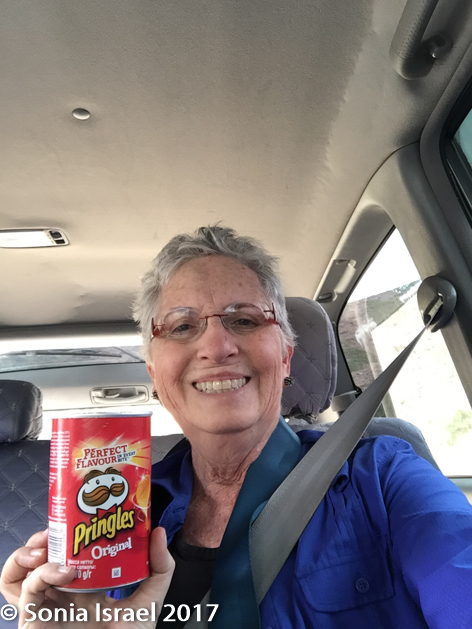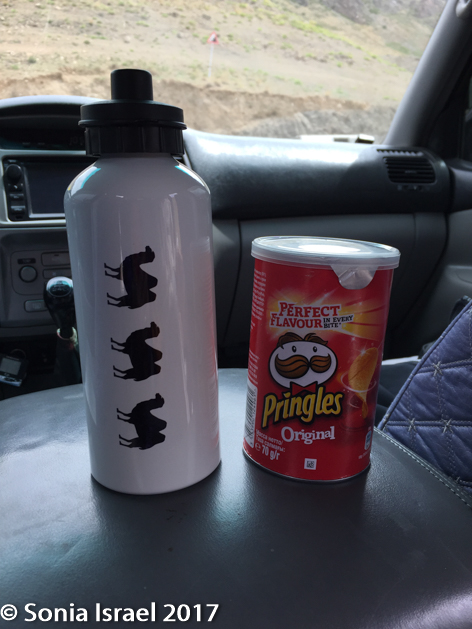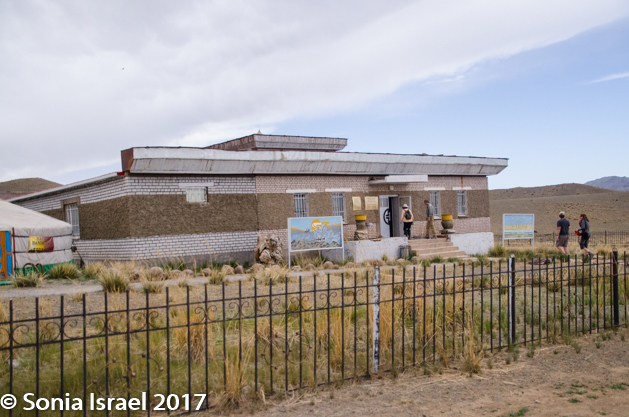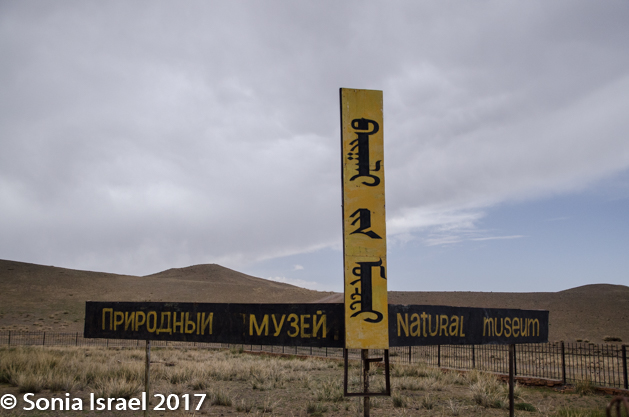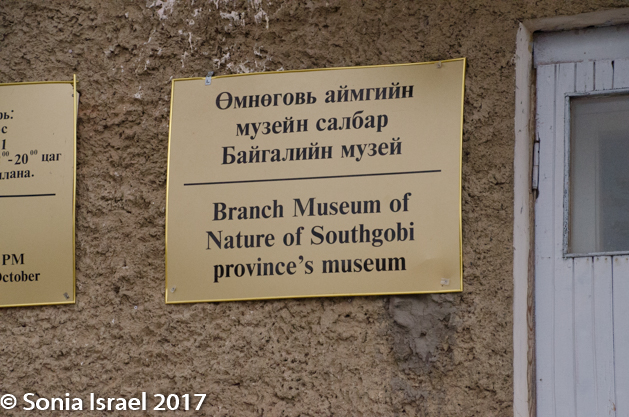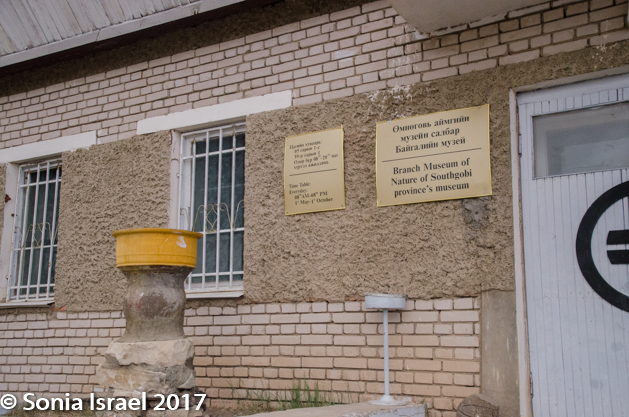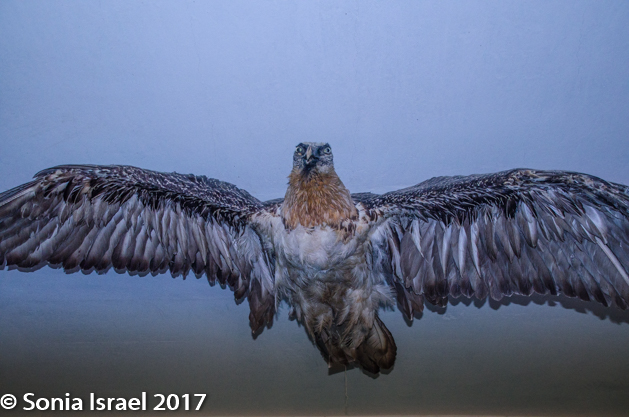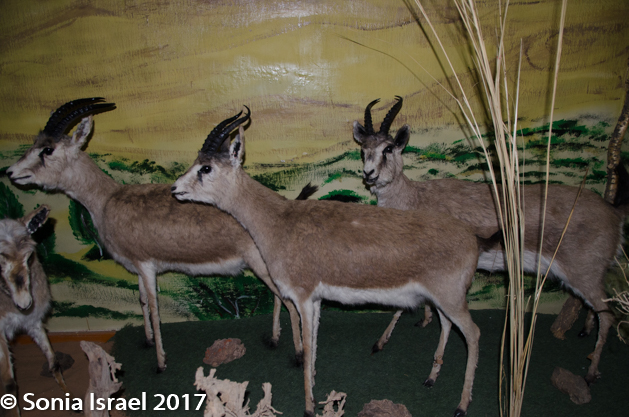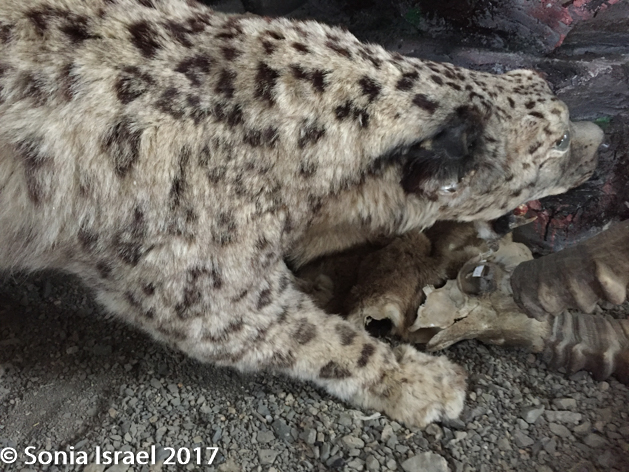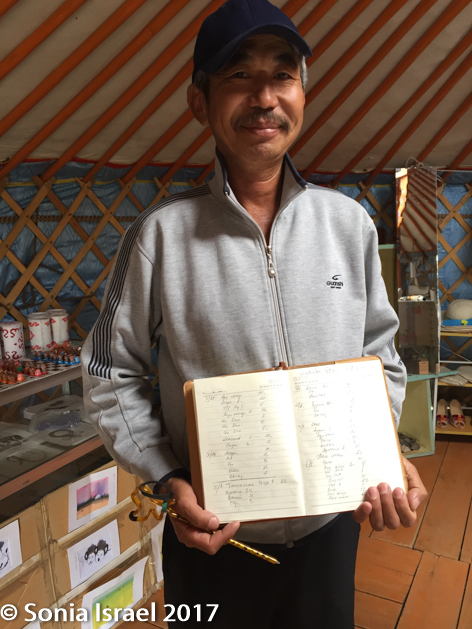National Geographic Trip to Mongolia, Day 5, June 15, 2017
The Gobi Desert
This morning we had a very, very early flight to the Gobi. Early as in 5:30AM. We were told to travel as light as possible as even our carry-on would be weighed and we would be charged for any weight over 33 pounds. That’s a hard thing to tell a photographer! But we all managed. As we went 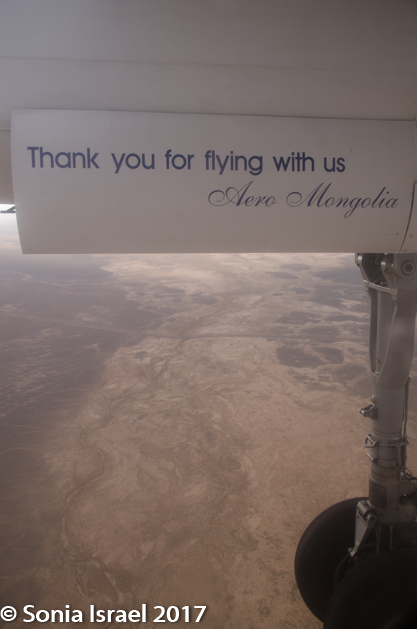 through security, every one of us buzzed and were hand checked. Not sure what the point of the metal detectors was since even with no metal, we all buzzed. The Aero Mongolia plane was a small prop, a Fokker 50, with seats 2×2 so everyone that wanted a window, got a window. And from the window we could see a message under the prop: Thank you for flying with us.
through security, every one of us buzzed and were hand checked. Not sure what the point of the metal detectors was since even with no metal, we all buzzed. The Aero Mongolia plane was a small prop, a Fokker 50, with seats 2×2 so everyone that wanted a window, got a window. And from the window we could see a message under the prop: Thank you for flying with us.
We flew over UB, over the steppes, south to the mystical Gobi desert. We flew over miles and miles of brown mountains as far as the eye could see, but different shades of brown with shadows as the sun hit it. And it was only 7 in the morning. It was flat surrounded by a ring of mountains. And then in the middle of nowhere, there would be a ger with nothing around it for miles. It was desolate, with so much empty land, land left to the whim of nature. Land allowed to breathe without being suffocated by buildings and roads and yes, even people. I worry that with the amount of building going on in UB, that in 10 or 20 or 30 years so much of this beautiful land will be covered in what they call progress.
We landed at the small, one-runway Gurvan Saikhan airport in Dalanzadgad, the capital of the Aimag Umnugovi (or Omnogovi) province in Mongolia. This is the gateway to the Gobi.
- Azaa, our fearless leader
The Gobi Desert is a vast, arid region in both northern China and much of southern Mongolia. The name “Gobi” is Mongol for a desert steppe. It is at 3000-4000 feet 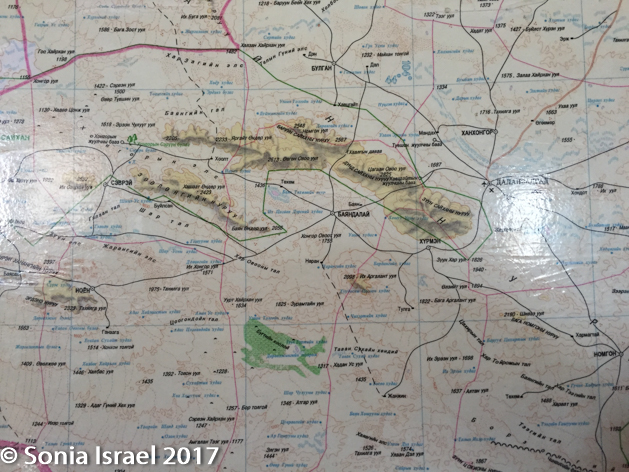 above sea level, so really not your typical desert. This also means that unlike most deserts, it can get quite cold here in the winter and quite hot in the summer. It’s known for its sand dunes (although not many), mountains and rare animals such as snow leopards, Argali mountain sheep, Saker falcons, and Bactrian camels, which are the last remaining wild Bactrian, i.e., two humped camels. The Gobi bear, the only desert bear, also lives here. While we did see the camels, we did not get to see any snow leopards or Gobi bears.
above sea level, so really not your typical desert. This also means that unlike most deserts, it can get quite cold here in the winter and quite hot in the summer. It’s known for its sand dunes (although not many), mountains and rare animals such as snow leopards, Argali mountain sheep, Saker falcons, and Bactrian camels, which are the last remaining wild Bactrian, i.e., two humped camels. The Gobi bear, the only desert bear, also lives here. While we did see the camels, we did not get to see any snow leopards or Gobi bears.
The arrival hall at the airport was small but there was a large, LARGE dinosaur head overlooking the proceedings. The Gobi is dinosaur country as it is the site of some of the most important paleontological discoveries of the 20th century. More on this to come.
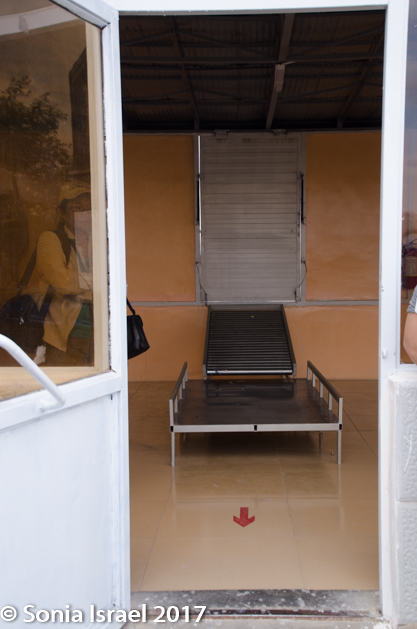 Our luggage was brought out and we boarded our six Toyota Highlander 4-wheel drive vehicles, once again in caravan formation. We drove for over an hour, over and through large barren expenses of gravel plains and rocky outcrops. It looked desolate from down here too. Suddenly car 1, our caravan leader, pulled over to the shoulder and all the other cars followed suit. We were on a paved road, a rare event here in Mongolia, and certainly rare in the Gobi. And off in the not-so distance were Bactrian camels. Our first sighting. They were just walking along, bending every so often to nibble on the little bit of greenery that was growing. We of course all jumped out with our cameras, ran across the road (no worry about traffic as there don’t seem to be many cars), and snapped away. The camels almost blended into the landscape, brown, brown, brown camels against brown, brown, brown land. Different shades of brown, but all brown. And as the sun hit different parts, the shadows created patterns that were awe-inspiring. And all this against a very blue sky scattered with white clouds. And all this was at 7:00 in the morning. The day was just beginning.
Our luggage was brought out and we boarded our six Toyota Highlander 4-wheel drive vehicles, once again in caravan formation. We drove for over an hour, over and through large barren expenses of gravel plains and rocky outcrops. It looked desolate from down here too. Suddenly car 1, our caravan leader, pulled over to the shoulder and all the other cars followed suit. We were on a paved road, a rare event here in Mongolia, and certainly rare in the Gobi. And off in the not-so distance were Bactrian camels. Our first sighting. They were just walking along, bending every so often to nibble on the little bit of greenery that was growing. We of course all jumped out with our cameras, ran across the road (no worry about traffic as there don’t seem to be many cars), and snapped away. The camels almost blended into the landscape, brown, brown, brown camels against brown, brown, brown land. Different shades of brown, but all brown. And as the sun hit different parts, the shadows created patterns that were awe-inspiring. And all this against a very blue sky scattered with white clouds. And all this was at 7:00 in the morning. The day was just beginning.
We climbed back into our respective cars and took off again, slowly making our way off the paved road and onto a path carved by previous vehicles. And we got closer and closer to the mountains until we found ourselves in the mountains. The dust from the cars ahead of us rose and enveloped the air, so each driver tried to back off a bit from the car ahead of it. Sometimes the only way can follow the car in front of you in the caravan is by the dust. We were heading for the Gobi Gurvansaikhan National Park where we would be spending the next few days.
Gobi Gurvansaikhan National Park
The Gobi Gurvansaikhan National Park is one of Mongolia’s most popular spots although most of us see only a small part of it. Although surrounded by four mountain ranges, it is named for the Gurvan Saikhan Mountains, which translates to the Three Beauties, the East, Middle and West Beauty subranges. The park is known for its striped badlands, beautiful mountain vistas and iconic sand dunes (although not many of them) as well as for the over 200 bird species that live here including the Mongolian desert finch, cinereous vulture, desert warbler and houbara bustard. There are also 600 or more types of plants, most of which only bloom after the rare heavy rain. The park was established in 1993 and expanded in the year 2000. Now it is about 10,000 square miles long (236 miles from east to west and 50 miles from north to south), making it the largest national park in Mongolia.
Yolyn Am
Driving through here, I imagined that this must be what Mars or the moon look like. We drove and drove and then, in the mountains, we saw a herd of horses, walking along in lines, following each other, stopping to graze, walking some more, then trotting or running alongside our cars.
They “rode” with us until we reached our destination, Yolyn Am, which means Lammergeyer’s mouth. The lammergeier is an eagle, so it is also called Eagle Valley. A third name is the Eastern Beauty as it is in the eastern part of the mountain range, at 6000 feet. Yolyn Am is a dramatic chasm that cuts a narrow path through the foothills of the arid Altai Mountains.
And of course there is a legend.
In ancient times an old noble decided to marry a beautiful young woman. However, she was in love with a young man. In order to part them, the old noble sent the young man to Eagle valley to hunt down young eaglets. When young man went down to the valley, the old noble cut the robes which the young man had used to climb down, and left the young man die. Then the old noble brought the young woman to his house.
But before the wedding ceremony, the young woman managed to run away and threw herself from the rocks surrounding the Eagle valley. Since then the place is called Eagle valley and rocks that surround the valley Okhiny hutul, meaning the young girls mount.
Heading in!
We got out of our cars, grabbed walking sticks, stopped in the porta-potties and began our hike.
There was a small stream running down the center and on either side of us where the tall, tall beauties, dramatic rock cliffs. The stream crossed back and forth across our path so we had to cross it multiple times, skipping across the stones. Ok, maybe not skipping, but slowly and carefully, trying very hard not to fall into the water.
And then, as the path got narrower and narrower, and the mountains seemed to be closing in on us, we reached our surprise. The stream had turned to ice! Blue veined ice. Ice in the Gobi dessert. This is one of the other things this part of the park is famous for. Depending on the time of year, the size of the ice field changes, but there is always ice here. Why ice? I mentioned earlier that the Gobi is at a high altitude and not like other deserts. Here it gets cold in the winter. So during the winter the small spring freezes and becomes several meters thick and several kilometers long. But we were there in summer, and the ice field, or in this case more like an ice shelf, was still there. The narrow, heavily shaded canyons are cool with little sun and this keeps the ice from melting well into the summer. And thus we got to see and touch ice in the Gobi.
And just on the other side of the ice, sat a man and his two sons, carving pictures of horses into rock. He had a wonderful face, covered with a big, brown felt hat and wearing a long, beige deel. I watched him for a bit. I took some pictures. I bought some beads.
And then I started heading back. Back past the ice shelf. Back across the stream (and across and across). Back to the fields as the valley widened and the mountains receded. Past recumbent cows who barely blinked as we walked by. Past our friends the horses who were still prancing about. Past birds flying around and singing. And back to the entrance.
We had arrived early so no one else was there when we walked in. Now there were tables set up with souvenirs for us tourists to peruse and hopefully buy. One older woman was selling hats along with the other souvenirs. Homemade hats made of rabbit. I looked them over trying to decide which I wanted. I had no intention of ever wearing it, but rather just wanted to add it to my hat/headdress collection. So Azza tried it on to show me how one wore it. I bargained using sign language. She held up four fingers. I held up two. We met in the middle at three. And then Azaa and the woman selling it made me try it on. I got my hat and a gift of a small felt camel. We took pictures and became fast friends.
When we got back to our cars we had snacks waiting for us. Pringles. Last thing I expected in Mongolia.
Branch Museum of Nature of South Gobi Provence Museum
Our next stop was just outside the entrance to Yolyn Am. It was the Natural Museum, also called the “Branch Museum of Nature of Southgobi Provence Museum.” While the name was a bit confusing, the contents were extremely interesting. There were stuffed eagles and stuffed snow leopards and stuffed Argali sheep. There were stuffed animals of every sort found in the Gobi. But that wasn’t the interesting part. The interesting part were the dinosaur bones and dinosaur eggs, labeled as being 65-70 million years old. As I said, this was dinosaur country. I looked back outside at the vastness and largess of the place and could just imagine the dinosaurs roaming through the land. It must have been quite a sight. But the most we got to see were the bones and the eggs (which looked rather small, smaller than an ostrich egg which is the largest in the world. I thought of the children’s book about things small and big which taught us about the size of eggs: “The ostrich is the largest egg, the hummingbird the smallest”).
Outside the museum were some colorful gurs that turned out to be souvenir shops. One also had homemade hats (the owner proudly told me his wife had made them), at about 5 times what I had paid for mine. I guess when you sell inside a ger vs. on an outside table, there is more overhead (joke). As with all gers, the door was small and even I had to bend down so as not to bump my head. I made a joke (using body language as we had no other common language) and he asked me to write in his book, above all the visitor’s signatures (most of which seemed to be from Mongolia): WATCH YOUR HEAD. He planned on copying it into a sign to place above the door.
Sakker falcon
As we continued our drive we suddenly all came to a stop behind other cars, all stopped along the side of the road. It was starting to rain, but that didn’t stop us. What was everyone looking at? There were two telescopes set up and people were lined up waiting to look through it. It was a Sakker falcon, way up in the mountain. Too hard to take a picture, but fun to see through the telescope.
We continued on the bumpy dirt road, each of our caravan of 6 land cruisers Toyota barreling along kicking up clouds of dust. And throwing us around. True off-roading. We were jostled and jostled. For an hour! But the scenery was spectacular so we didn’t care. Every once in a while we would see a herd of sheep and goats (those always seemed to be together). Or a herd of cattle. Or horses. Or camels. Then, a bit further down there would be a lone ger, always with a blue truck by its side (in all the time in Mongolia, we saw a red truck once. All the rest were blue).
Or once in a while there would be a string of gers. That was the tourist camps. But not ours yet.
And we kept thinking we were seeing large lakes in the distance. But it was always a mirage. That really does exist!
